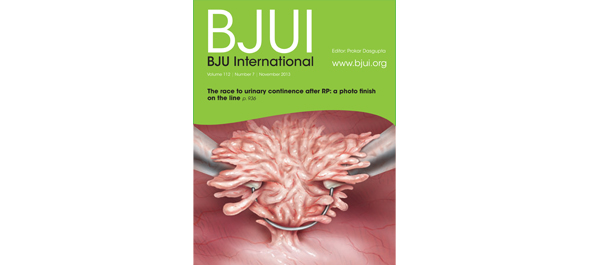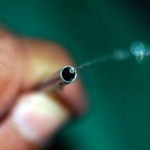Article of the month: The race to urinary continence after RP
Every week the Editor-in-Chief selects the Article of the Week from the current issue of BJUI. The abstract is reproduced below and you can click on the button to read the full article, which is freely available to all readers for at least 30 days from the time of this post.
In addition to the article itself, there is an accompanying editorial written by prominent members of the urological community. This blog is intended to provoke comment and discussion and we invite you to use the comment tools at the bottom of each post to join the conversation.
Finally, the third post under the Article of the Week heading on the homepage will consist of additional material or media. This week we feature a video of Inge Geraerts discussing functional outcomes after ORP and RARP.
If you only have time to read one article this week, it should be this one.
Prospective evaluation of urinary incontinence, voiding symptoms and quality of life after open and robot-assisted radical prostatectomy
Inge Geraerts*, Hendrik Van Poppel†, Nele Devoogdt*‡, Ben Van Cleynenbreugel†, Steven Joniau† and Marijke Van Kampen*‡
Departments of *Rehabilitation Science, †Urology and ‡Physical Medicine and Rehabilitation, UZ Leuven, Leuven, Belgium
OBJECTIVE
• To compare functional outcomes, i.e. urinary incontinence (UI), voiding symptoms and quality of life, after open (ORP) and robot-assisted radical prostatectomy (RARP).
PATIENTS AND METHODS
• Between September 2009 and July 2011, 180 consecutive patients underwent radical prostatectomy; of these, 116 underwent ORP and 64 underwent RARP. We prospectively assessed the functional outcomes of each group during the first year of follow-up.
• We measured UI on the 3 days before surgery (24-h pad test) and daily after surgery until total continence, defined as 3 consecutive days of 0 g urine leak, was achieved. Additionally, all patients were assessed before surgery and at 1, 3, 6 and 12 months after surgery using the International Prostate Symptom Score (IPSS) and the King’s Health Questionnaire (KHQ).
• All patients received pelvic floor muscle training until continence was achieved.
• Kaplan–Meier analyses and Cox regression with correction for covariates were used to compare time to continence. A Mann–Whitney U-test was used to assess IPSS and KHQ.
RESULTS
• Patients in the RARP group had a significantly lower D’Amico risk group allocation and underwent more nerve-sparing surgery. Other characteristics were similar.
• Patients in the RARP group regained continence sooner than those in the ORP group (P = 0.007). In the RARP group, the median time to continence (16 vs 46 days, P = 0.026) was significantly shorter and the median amount of first day UI (44 vs 186 g, P < 0.01) was significantly smaller than in the ORP group. After correction for all covariates, the difference remained significant (P = 0.036, hazard ratio [HR] 1.522 (1.027–2.255). In addition, younger men, men with positive surgical margins and men without preoperative incontinence achieved continence sooner.
• A comparison of time to continence between groups with a sufficient number of patients (intermediate risk and/or bilateral nerve-sparing) still showed a faster return of continence after RARP, but the effect decreased in size and was nonsignificant (HR>1.2, P> 0.05).
• Only six patients (two in the RARP and four in the ORP group) still had UI after 1 year.• Patients in the RARP group had significantly better IPSS scores at 1 (P = 0.013) and 3 (P = 0.038) months, and scored better in almost all KHQ aspects.
CONCLUSION
• In this prospective trial, patients treated with RARP tended to regain urinary continence sooner than patients treated with ORP, but in subgroup analyses statistical significance disappeared and effect size decreased dramatically, indicating that the results must be interpreted with caution.
Read Previous Articles of the Week



